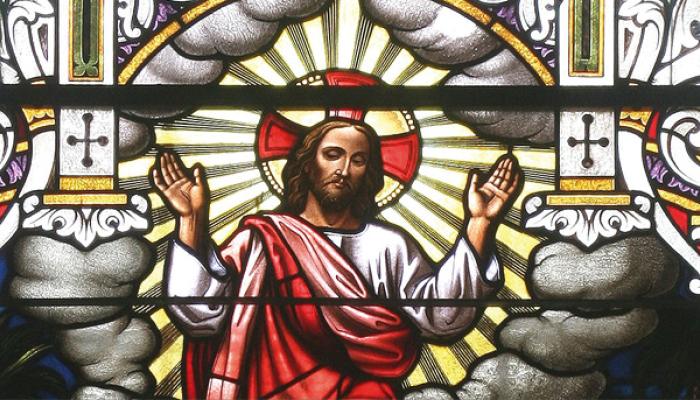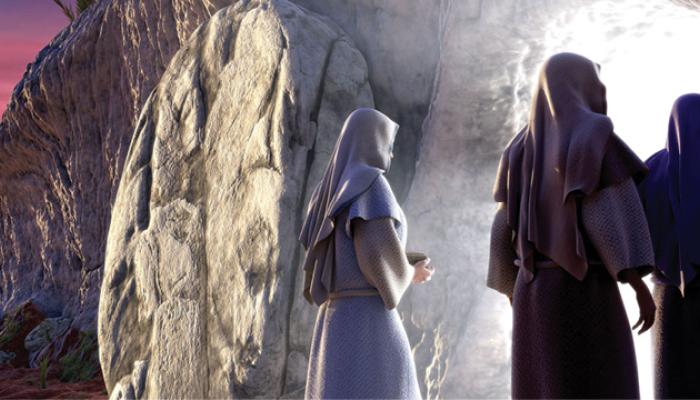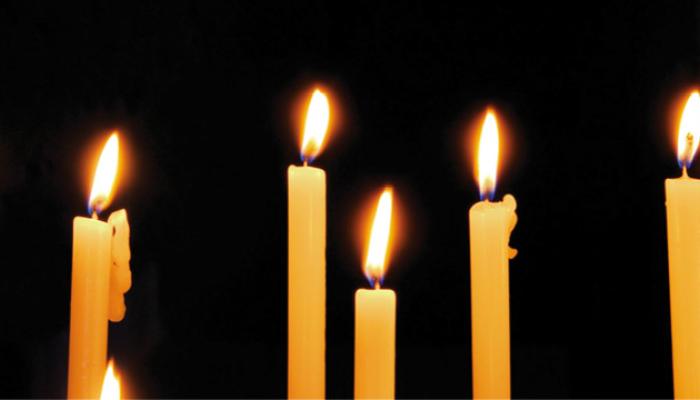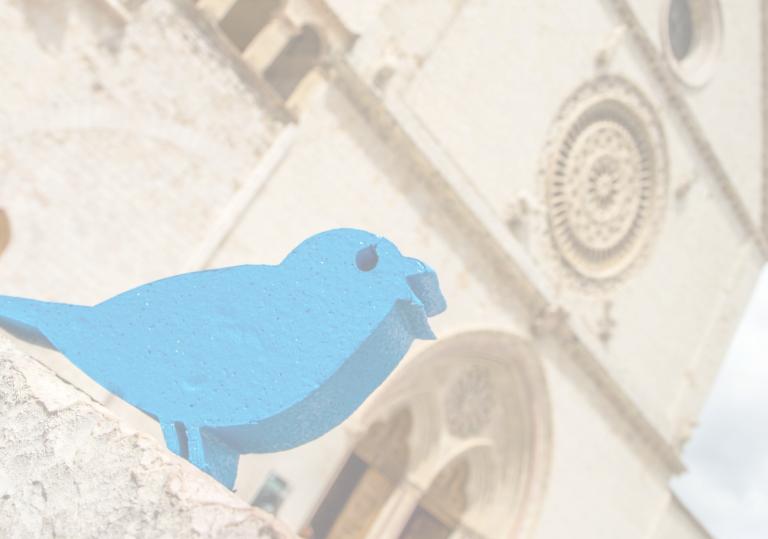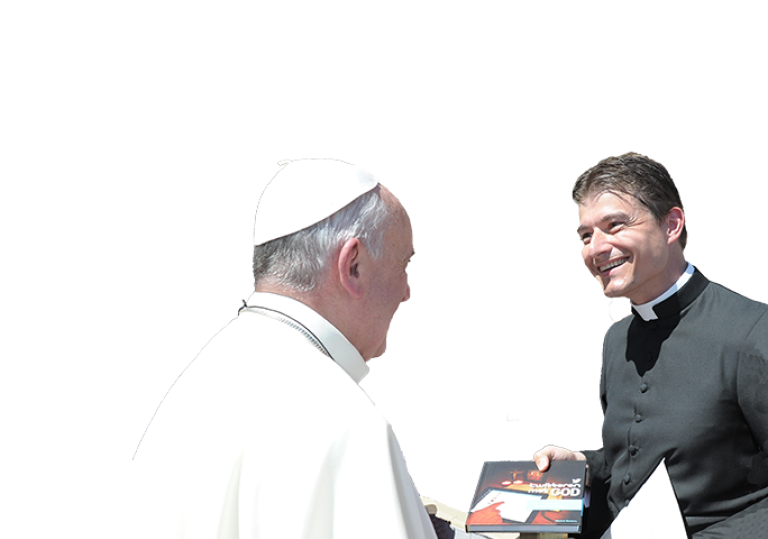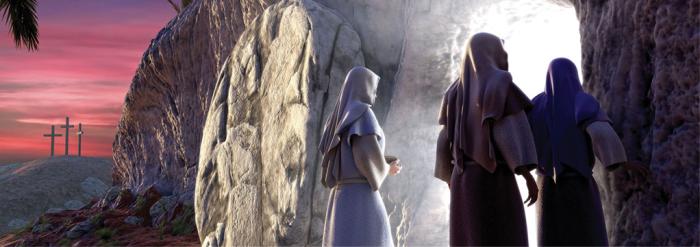
3.33 Sa të rëndësishme janë Pashkët? Çka është “Urbi et Orbi”?
Ne festojmë ngjarjen më të rëndësishme të fesë së krishterë gjatë Pashkëve. Ajo që festojmë për Pashkë është thelbi i identitetit tonë si të krishterë: Jezusi nuk u lind vetëm që të na fliste për Zotin, por edhe pranoi të vuante dhe të vdiste për ne.
Gjatë Pashkëve, festojmë ringjalljen e Jezusit nga të vdekurit që na mundësoi të jetojmë përgjithmonë me Zotin në parajsë. Në mëngjesin e së Dielës së Pashkës (si për Krishtlindje), Papa e bekon qytetin e Romës dhe botën (‘Urbi et Orbi’) prej ballkonit të Sh. Pjetrit. Koha e Pashkëve zgjat dyzet ditë (deri për Rrëshajë).
Cila është vepra e Krishtit në liturgji?
Në liturgjinë e Kishës, Krishti shënon dhe realizon para së gjithash Misterin e Vet pashkor. Duke u dhuruar Shpirtin Shenjt Apostujve u dha atyre dhe pasardhësve të tyre pushtetin për të vënë në jetë veprën e shpëtimit nëpërmjet Flisë eukaristike dhe Sakramenteve, në të cilat Ai vetë vepron për t’u dhënë hirin e Vet besimtarëve të të gjitha kohëve dhe në mbarë botën. [KKKP 222]
What is the essence of every liturgy?
Liturgy is always in the first place communion or fellowship with Jesus Christ. Every liturgy, not just the celebration of the Eucharist, is an Easter in miniature. Jesus reveals his passage from death to life and celebrates it with us.
The most important liturgy in the world was the Paschal liturgy that Jesus celebrated with his disciples in the Upper Room on the night before his death. The disciples thought that Jesus would be commemorating the liberation of Israel from Egypt. Instead, Jesus celebrated the liberation of all mankind from the power of death. Back in Egypt it was the “blood of the lamb” that preserved the Israelites from the angel of death. Now he himself would be the Lamb whose blood saves mankind from death. For Jesus’ death and Resurrection is the proof that someone can die and nevertheless gain life. This is the genuine substance of every Christian liturgy. Jesus himself compared his death and Resurrection with Israel’s liberation from slavery in Egypt. Therefore, the redemptive effect of Jesus’ death and Resurrection is called the Paschal mystery. There is an analogy between the life-saving blood of the lamb at the Exodus of the Israelites from Egypt (Ex 12) and Jesus, the true Paschal Lamb that has redeemed mankind from the bondage of death and sin. [Youcat 171]
Cilat “shenja” vërtetojnë Ngjalljen e Jezusit?
Përveç shenjës thelbësore të varrit të zbrazur, Ngjallja e Jezusit vërtetohet nga gratë që e takuan të parat Jezusin dhe ua kumtuan Apostujve. Pastaj Jezusi “iu duk Kefës (Pjetrit), e pastaj të Dymbëdhjetëve. Gjithashtu iu duk vëllezërve, që ishin së bashku më shumë se pesëqind vetë” (1 Kor 15, 5-6) dhe të tjerëve përsëri. Apostujt nuk kanë mundur ta sajojnë Ngjalljen, pasi kjo gjë u dukej atyre e pamundur: në fakt Jezusi i ka qortuar ata për mosbesimin e tyre. [KKKP 127]
Pse Ngjallja është në të njëjtën kohë një ngjarje transhendente?
Edhe pse duke qenë një ngjarje historike, e konstatuar dhe e vërtetuar nëpërmjet shenjave dhe dëshmive, Ngjallja, duke qenë hyrja e natyrës njerëzore të Krishtit në lavdinë e Hyjit, e tejkalon dhe e kapërcen historinë, si mister të fesë. Për këtë arsye, Krishti i ngjallur nuk iu shfaq botës, por nxënësve të Vet, duke i bërë dëshmitarë përpara popujve. [KKKP 128]
How did the disciples come to believe that Jesus is risen?
The disciples, who before had lost all hope, came to believe in Jesus’ Resurrection because they saw him in a different way after his death, spoke with him, and experienced him as being alive.
The Easter events that took place in Jerusalem in the year 30 are not a made-up story. Following the death of Jesus and the defeat of their whole cause, the disciples fled (“We had hoped that he was the one to redeem Israel”, Lk 24:21) or else barricaded themselves behind locked doors. Only their encounter with the risen Christ freed them from their paralysis and filled them with an enthusiastic faith in Jesus Christ, the Lord of life and death. [Youcat 105]
Are there proofs for the Resurrection of Jesus?
There are no proofs for the Resurrection of Jesus in the scientific sense. There are, however, very strong individual and collective testimonies by a large number of contemporaries of those events in Jerusalem.
The oldest written testimony to the Resurrection is a letter that St. Paul wrote to the Corinthians around twenty years after Christ’s death: “For I delivered to you as of first importance what I also received, that Christ died for our sins in accordance with the Scriptures, that he was buried, that he was raised on the third day in accordance with the Scriptures, and that he appeared to Cephas, then to the Twelve. Then he appeared to more than five hundred brethren at one time, most of whom are still alive, though some have fallen asleep” (1 Cor 15:3–6). Paul is recording here a living tradition that was present in the original Christian community two or three years after Jesus’ death and Resurrection, when he himself became a Christian—on the basis of his own staggering encounter with the risen Lord. The disciples took the fact of the empty tomb (Lk 24:2–3) as the first indication of the reality of the Resurrection. Women, of all people, discovered it—according to the law of that time they were not able to testify. Although we read about the apostle John that he “saw and believed” (Jn 20:8b) already at the empty tomb, full assurance that Jesus was alive came about only after a series of appearances. The many encounters with the risen Lord ended with Christ’s Ascension into heaven. Nevertheless, there were afterward and there are even today encounters with the living Lord: Jesus Christ lives. [Youcat 106]
Sot dëshmitarët flasin: jo vetëm të parët, dëshmitarët okularë, por edhe ata që, prej tyre, kanë mësuar mesazhin e Pashkëve dhe kanë bartur dëshmi të Krishtit të kryqëzuar dhe të ringjallur nga brezi në brez. Disa kanë qenë dëshmitarë edhe të derdhjes së gjakut të tyre dhe, falë tyre, Kisha ka vazhduar rrugëtimin e saj, edhe në mesin e persekutimeve të ashpra dhe mohimit kokëfortë... duke rrëfyer vdekjen dhe ringjalljen e tij në kampet e përqendrimit dhe gulagët, nën kërcënimin e bombave dhe armëve, në mes të terrorit të lëshuar nga urrejtja e verbër, e cila ka gllabëruar tragjikisht njerëz dhe kombe të tëra. Sot ata vijnë nga mundime të mëdha dhe këndojnë lavdinë e Krishtit: në të, duke dalë nga hijet e vdekjes, jeta është bërë e qartë. [Papa Gjon Pali II, Urbi et Orbi Pashkë 1998, 2]

